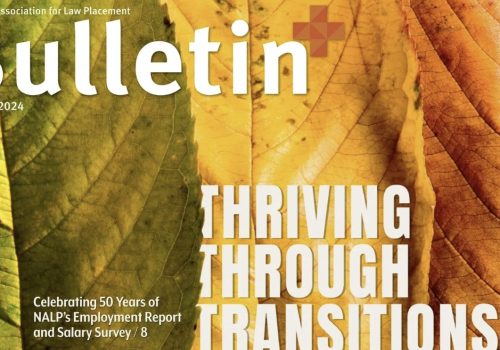How Street Law Aligns with the Common Core State Standards

Share this Article
Active participation in a democracy requires an array of skills. These skills are not innate, but they can be taught by educators and honed by students, both inside and outside the classroom. Since its founding in 1972, Street Law—a non-profit organization dedicated to empowering young people to become legally savvy contributors to society—has created a wealth of resources that prepare young people to “do democracy.” Street Law programs have an added benefit: they provide an authentic context in which to develop the reading, writing, listening, and speaking skills that are central to the Common Core. Students who take part in Street Law activities discuss and write about current and controversial issues, engage in simulations of democratic practices, receive pertinent civic instruction, and learn how to formulate arguments in support of policies they advocate.
The Common Core State Standards were created to provide a clear articulation of the knowledge and skills that all American students need for success in college and careers. As noted at the Common Core State Standards Initiative, students who master the Core’s English Language Arts (ELA) Standards value evidence, demonstrate independence, and critique as well as comprehend. Teachers of all subjects—including social studies, government, and history—are expected to help students meet the Core’s high standards, and Street Law resources can play a valuable role in this process. Street Law materials require students to engage in collaboration, critical thinking, creativity, and communication—all of which are essential to the Core as well as to competing successfully in the global economy. [1]
With the assistance of a team of high school social studies teachers and civic education experts, Street Law has connected many of its classroom-tested resources to ELA Common Core State Standards. These materials cover five key Street Law programs, which are described below along with Core standards addressed by each program:
- Mock Trials and Moot Courts
- LandmarkCases.org
- Supreme Court Case Summaries
- Street Law Textbook
- Deliberating in a Democracy
Special thanks to our contributors: Mary Ellen Daneels, Community High School, West Chicago, IL; Patrick Sprinkle, Manhattan Lab School for Collaborative Studies, New York, NY; and Ed Sugden, Animo Jackie Robinson High School, Los Angeles, CA.

Mock Trials and Moot Courts
When students participate in mock trials and moot courts, they learn how to work together to analyze multiple texts, synthesize facts, and formulate arguments. Students must listen and respond to their peers as they take on the roles of plaintiffs, defendants, attorneys, judges, and jurors. These simulations of judicial processes prepare students for civic life, build understanding of important disciplinary knowledge, and provide an authentic platform to help learners meet several Common Core objectives, including
- Develop a range of broadly useful oral communication and interpersonal skills
- Work together to achieve a common goal
- Express and listen carefully to ideas/integrate ideas
- Evaluate what they hear
On its website, Street Law offers free mock-trial materials developed by the Georgetown Law Center Street Law Project for the annual city-wide mock trial competition in the District of Columbia. A separate publication, the “Classroom Guide to Mock Trials and Moot Courts,” contains detailed instructions and lesson plans that prepare students to participate in mock trials and moot courts, along with comprehensive materials to conduct nine mock trials and six moot courts.
Common Core standards addressed through mock trials and moot courts include the following:
- Come to discussions prepared, having read and researched material under study; explicitly draw on that preparation by referring to evidence from texts and other research on the topic or issue to stimulate a thoughtful, well-reasoned exchange of ideas. (CCSS.ELA-Literacy.SL.11-12.1a)
- Work with peers to promote civil, democratic discussions and decision-making, set clear goals and deadlines, and establish individual roles as needed. (CCSS.ELA-Literacy.SL.11-12.1b)
- Propel conversations by posing and responding to questions that probe reasoning and evidence; ensure a hearing for a full range of positions on a topic or issue; clarify, verify, or challenge ideas and conclusions; and promote divergent and creative perspectives. (CCSS.ELA-Literacy.SL.11-12.1c)
- Respond thoughtfully to diverse perspectives; synthesize comments, claims, and evidence made on all sides of an issue; resolve contradictions when possible; and determine what additional information or research is required to deepen the investigation or complete the task. (CCSS.ELA-Literacy.SL.11-12.1d)
- Delineate and evaluate the argument and specific claims in a text, assessing whether the reasoning is valid and the evidence is relevant and sufficient; identify false statements and fallacious reasoning. (CCSS ELA Literacy RI Standard 9-10.8)

LandmarkCases.org
LandmarkCases.org, a website developed by Street Law and the Supreme Court Historical Society, provides educators with free lesson plans that use primary documents and informational texts to teach about the 17 U.S. Supreme Court decisions—from Marbury v. Madison to Texas v. Johnson— most frequently included in state social studies content standards.
As students work with LandmarkCases.org resources, they not only meet ELA standards that require students to read “complex” and “sophisticated” nonfiction, but they wrestle with multiple interpretations and conceptions of justice, equality, and liberty.
Each of the lesson plans includes key vocabulary terms extracted from Supreme Court opinions, case summaries, and a robust set of teaching activities. Because the site offers both historical and modern cases, students can analyze how the interpretation of words and phrases has shifted over time.
Street Law differentiates instruction, offering background material on each case at three reading levels to address the reality that there is a span of reading abilities in many classrooms. This content can be used effectively with English Language Learners and students with disabilities, as well as with AP students.
Common Core standards addressed through LandmarkCases.org include the following:
- Analyze seminal U.S. documents of historical and literary significance, including how they address related themes and concepts. (CCSS.ELA-Literacy.RI.9-10.9)
- Determine the meaning of words and phrases as they are used in a text, including analyzing how an author uses and refines the meaning of a key term over the course of a text. (CCSS.ELA-Literacy.RH.11-12.4)

Supreme Court Case Summaries
Street Law’s Free Resource Library offers dozens of CCSS-aligned, classroom-ready Supreme Court case summaries (from 1999 to the present, and continually updated) that are ideal curricular supplements for social studies teachers. Each document is generally about four pages long and provides background on the case while encapsulating the central issues, Constitutional provisions and precedents, arguments for each side, and majority and dissenting opinions.
Teachers can use case summaries with a variety of teaching strategies to promote critical thinking, discussion, and historical inquiry. Specific activities include the following:
- Learn the anatomy of a case by identifying each element (facts, issues, arguments, and decisions)
- Choose the decision they think the Court should make and give reasons for their selection
- Consider the facts, issues, and arguments and write the Court’s opinion
- Work in groups to develop arguments for each side and present a moot court
- Apply decisions (precedents) to resolve related fact situations
- Study the majority and dissenting opinions in a case and craft a summary that outlines key points in the judges’ reasoning
Common Core standards addressed through Supreme Court Case Summaries include the following:
- Determine two or more central ideas of a text and analyze their development over the course of the text, including how they interact and build on one another to provide a complex analysis; provide an objective summary of the text. (CCSS.ELA-Literacy.RI.11-12.2)
- Analyze how the author unfolds an analysis or series of ideas or events, including the order in which the points are made, how they are introduced and developed, and the connections that are drawn between them. (CCSS ELA Literacy RI9-10.3)

Street Law Textbook
Street Law: A Course in Practical Law [2], the textbook used in high school law courses across the country, highlights legal issues relevant to students’ lives and helps them develop the skills and knowledge that are essential to living in contemporary American society.
Throughout the text, students read about compelling, real-world problems while considering multiple and competing interpretations of open questions. Students have multiple opportunities to make and defend arguments—a central facet of the Common Core—as they analyze various cases, issues, graphics, and illustrations. For example, in the chapter on deceptive sales practices, students examine various advertisements to discern if they are legal. In the chapter on criminal law and juvenile justice, an activity based on the “U.S. Crime Clock” requires students to make inferences about patterns in crime rates. The problem-based approach of the text helps students build understanding of important civics content as they develop the skills needed to use this content to improve their lives and communities.
Common Core standards addressed through the Street Law Textbook include the following:
- Cite strong and thorough textual evidence to support analysis of what the text says explicitly, as well as inferences drawn from the text. (CCSS.ELA-Literacy.RI.9-10.1)
- Integrate and evaluate multiple sources of information presented in diverse formats and media (e.g., visually, quantitatively, as well as in words) in order to address a question or solve a problem. (CCSS.ELA-Literacy.RH.11-12.7)

Deliberating in a Democracy
Street Law offers a number of deliberation lesson plans that enable students to explore all sides of public-policy issues. These exercises promote the development of ELA reading, communication, and interpersonal skills.
Deliberations foster environments that leverage classroom diversity while encouraging students to think critically, develop their own opinions, and seek out common ground with supporters of the other side of an argument. This method—which differs from a debate in that debaters seek to prove their opponents wrong, while deliberation is collaborative and aimed at finding common ground—helps students learn skills and acquire knowledge that can be applied to the democratic process.
Students initially engage with a controversial public-policy issue—such as same-sex marriage or capital punishment—by completing an assigned reading on the issue and identifying facts that support their assigned side of the issue. Students then exchange information with peers who represent the other side of the issue. After structured consideration of multiple perspectives, students are asked to reflect on their own ideas about the question at hand.
This strategy prepares young people to engage in civil discourse. Students support their side of an issue by exercising reasoning skills to develop claims and counterclaims. They extract deeper meaning from the original text as they move through the exercise and are able to make an increasing number of connections between texts—becoming more aware of inconsistencies and vague arguments. Students evaluate what they hear from their peers and examine the text before drawing conclusions.
Street Law developed the Deliberating in a Democracy program along with long-time partners the Constitutional Rights Foundation and the Constitutional Rights Foundation Chicago. The program, funded by the U.S. Department of Education, produced scores of free, topic-specific materials for teaching about controversial issues using the deliberation process. A careful evaluation of the program showed the powerful impact that deliberations have on student learning.
Deliberations embody highly engaging civic instruction while facilitating mastery of the following Common Core proficiencies:
- Come to discussions prepared, having read and researched material under study; explicitly draw on that preparation by referring to evidence from texts and other research on the topic or issue to stimulate a thoughtful, well-reasoned exchange of ideas. (CCSS.ELA-Literacy.SL.11-12.1a)
- Work with peers to promote civil, democratic discussions and decision-making, set clear goals and deadlines, and establish individual roles as needed. (CCSS.ELA-Literacy.SL.11-12.1b)
- Propel conversations by posing and responding to questions that probe reasoning and evidence; ensure a hearing for a full range of positions on a topic or issue; clarify, verify, or challenge ideas and conclusions; and promote divergent and creative perspectives. (CCSS.ELA-Literacy.SL.11-12.1c)
- Respond thoughtfully to diverse perspectives; synthesize comments, claims, and evidence made on all sides of an issue; resolve contradictions when possible; and determine what additional information or research is required to deepen the investigation or complete the task. (CCSS.ELA-Literacy.SL.11-12.1d)
- Delineate and evaluate the argument and specific claims in a text, assessing whether the reasoning is valid and the evidence is relevant and sufficient; identify false statements and fallacious reasoning. (CCSS ELA Literacy RI 9-10.8)
- Develop claim(s) and counterclaims fairly and thoroughly, supplying the most relevant data and evidence for each while pointing out the strengths and limitations of both claim(s) and counterclaims in a discipline-appropriate form that anticipates the audience’s knowledge level, concerns, values, and possible biases. (CCSS.ELA-Literacy.WHST.11-12.1b)
Mock trials, case summaries, deliberations, and high-quality interactive texts and materials like Street Law: A Course in Practical Law and LandmarkCases.org can help students gain the knowledge and develop the skills identified in the Common Core State Standards, while also teaching them what it means to be an active, empowered member of society.
To access the resources described in this article, visit the Street Law Free Resource Library. There, you’ll find hundreds of teaching activities and methods, case summaries, mock trials, and articles organized by topic, audience, and type.
[1] The College, Career, and Civic Life (C3) Framework for social studies was published September 2013. The C3 Framework provides support and guidance to states and districts that want to strengthen their social studies standards. Its emphasis on inquiry, disciplinary knowledge, evaluating evidence, and communicating conclusions to take informed action aligns particularly well with Street Law’s active learning approach and practical focus. www.socialstudies.org/C3



